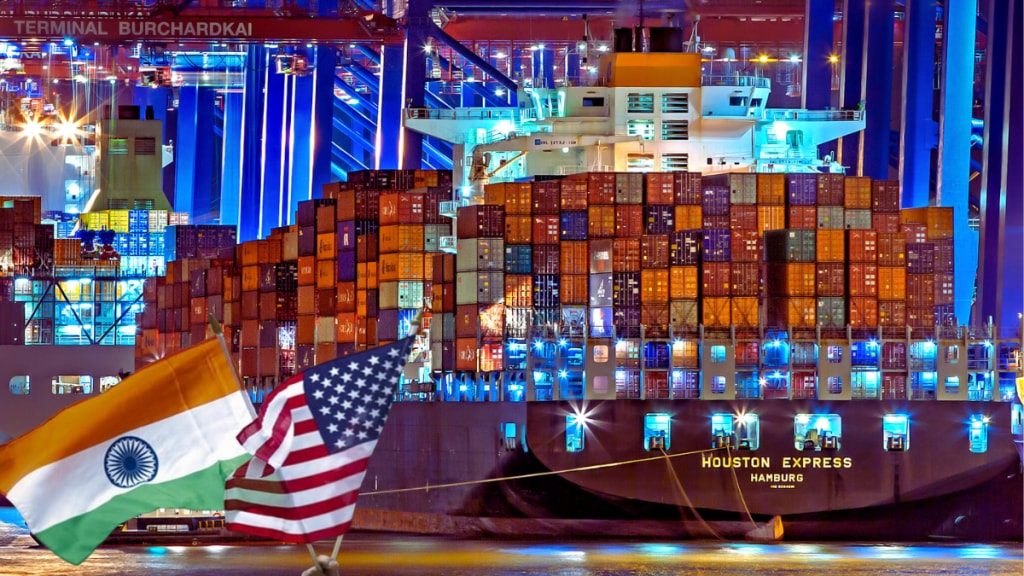The much-awaited interim trade deal between India and the US, which is crucial for New Delhi to avoid a sharp tariff escalation in goods shipments to the world’s largest economy, could be announced anytime soon, official sources said here on Thursday. Negotiations were “very close” to be concluded, they said.
The formal announcement of the deal might coincide with the US Independence Day (Friday), or it might take place over the weekend, or latest by early next week, the source added.
Indian negotiators have remained engaged with the US team in Washington for the interim deal for the eighth day on Thursday.
Reuters reported from Washington that negotiators have been asked to be prepared for a potential announcement. While the immediate gain for India from the deal would be the exemption from the reciprocal tariff of 26% that would otherwise come into force from July 9, New Delhi also sought cuts or exemptions from sector-specific duties imposed or being planned by the US.
While India seeks to draw red lines in regard to the US demand for duty cuts on farm and dairy goods, Bloomberg reported that the country might allow imports of some processed, genetically modified animal feeds. “Authorities may agree to inbound shipments of some products used in animal feeds, such as soybean meal and distillers dried grains with solubles, a byproduct of corn-based ethanol production,” the agency reported, quoting people familiar with the matter, who asked not be identified.
The US has imposed 50% additional duties on steel and aluminium and 25% on auto and auto parts. President Donald Trump has also indicated putting extra tariffs on pharmaceutical products. Apart from seeking exemption from these tariffs, India has sought assurances on any future tariff actions by the US, in lieu of the tariff concessions it has offered to that country.
Broadly, India’s interest in the agreement is to seek greater access to the US market for its traditional employment-intensive exports and emerging sectors like electronics, battery and solar power products manufacturing. The sectors broadly covered by the Production Linked Incentive (PLI) scheme.
The high labour-intensity sectors contributed over $14.3 billion to India’s exports to the U.S. in FY25. These include garments ($ 5.33 billion), textiles and carpets ($ 2.38 billion), made-ups and worn clothing ($ 2.95 billion), leather ($ 795 million), footwear ($ 461 million), ceramics and stoneware ($ 1.55 billion), and wood and paper articles ($ 823 million).
Medium labour-intensity exports—those combining skilled labour with capital—amounted to $44.6 billion. These include electronics and telecom products ($ 15.9 billion), diamonds and jewellery ($ 9.97 billion), chemicals excluding pharmaceuticals ($ 5.37 billion), iron and steel goods ($ 3.7 billion), base metals ($ 1.88 billion), automobiles and parts ($ 2.59 billion), plastics and rubber articles ($ 2.6 billion).
Under such a deal, India is expected to cut MFN tariffs specifically for the US for the on a wide range of industrial goods, including automobiles, enhanced market access for which is a persistent demand from Washington. In agriculture, India may offer limited market access through tariff reductions and tariff-rate quotas (TRQs) on select US products such as ethanol, almonds, walnuts, apples, raisins, avocados, olive oil, spirits, and wine.
However, India is unlikely to budge on sensitive sectors. No tariff cuts are expected for dairy products or key food grains like rice and wheat, where farm livelihoods are at stake.
In FY2025, trade between India and the U.S. reached $186 billion as per commerce ministry data. India exported $ 86.5 billion in goods to the U.S. while importing $45.3 billion, creating a goods trade surplus of $41 billion. In services, India exported an estimated $28.7 billion and imported $25.5 billion, adding a $3.2 billion surplus. Altogether, India ran a total trade surplus of about $ 44.4 billion with the US.

